
In the first part of this article, we reviewed the anatomy of the serratus anterior muscle and its role of protracting the scapula. To help integrate our understanding, we physically explored the sliding protraction and retraction of the scapula in the pose ‘Protraction Retraction Push-ups’.

The serratus anterior stabilizes and protracts the scapula during pushing movements, such as in pushing open a heavy door, or in yoga when you do Plank or Chaturanga Dandasana. Activation of this muscle prevents the scapula’s medial border from lifting or “winging”, a common sight when these poses are performed incorrectly.
So, how do we activate the serratus anterior muscle in these exercises?
Actively push the floor away with your hands as if lifting your heart towards the ceiling and simultaneously imagine drawing the hands towards your feet like you are shutting a window. Continue with these cues all the time you are in the pose. As you do this you may feel the image I used in the first part of this article of the large 9 fingered hand hugging your back and side ribs and suction cupping your scapula onto your upper back. If it is too challenging on the ground, you can do it standing at the wall. The benefit is the same and it is easier to propriocept the serratus in this organization.
There is nothing like physically practicing to take words from a page and embody the movement! Try on your new plank and let me know how it feels in the comments below.


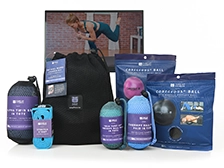
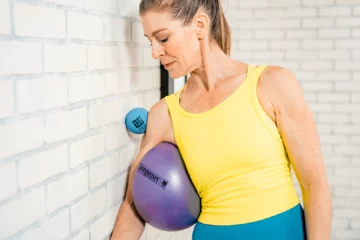

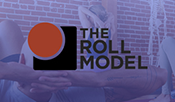
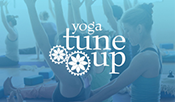


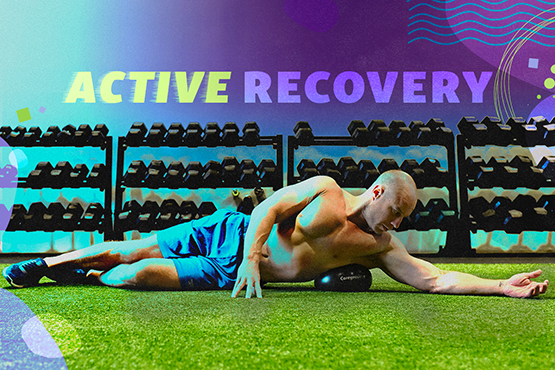
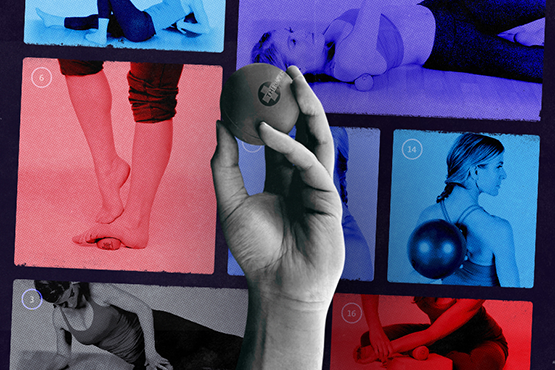
After Yoga Tune Up training teaching planks will never be the same.
This muscle took me a very long time to “feel”, but once I was able to access it, it really transformed my planks, push-ups, and overall shoulder stability. I love practicing transitioning from a push up into downward facing dog as a way to really reinforce should protraction and activation of the serratus.
Scapulas push ups are great for strengthening serrated anterior and can be done from table or quadruped position as a warmup up in practice and /or from plank -,I think it’s really important to show students what protraction and retraction look like because many may not know and/or not know how it feels in their own bodies.
“Bodysurfing on a blanket” one of my favorite yoga tune up exercise so far, can also be a great way to Bring awareness and/strength here. I have also used a soft ball between the shoulder blades for crunches; knees bent, a slight posterior tilt of the pelvis. This works really well to bring awareness to the thoracic spine and the area between the shoulder blades.
Learned about this in Pilates training as well. I was happy this was taught in Yoga Tune Up and will continue to incorporate in my teachings. Thanks.
These instructions are perfect for me as I am truly struggling with protraction of my scapula. Your cues are the missing bit of info I needed to put this all together.
Thank you for theses great cues! Just sitting here I can easily visualize and activate my serratus anterior by imagining that I am pushing a wall away in front (heart towards my back) and simultaneously imagine trying to resist drawing my hands down towards my feet. Now I can practice even when I am driving!
I’ve recently completed the Level 1 YTU course and have just learned of the serratus anterior. Being able to activate it during push-ups and various other exercises/poses makes everything feel so much more stable! Great post!
Love the way you describe “ push the floor away as of lift your heart towards the ceiling and simultaneously image ink drawing the hands towards your feet like shutting the window”. The image helps a lot of the movement and activation of the anterior serratus.
I have been struggling for the right cues to work here. This cue, “Actively push the floor away with your hands as if lifting your heart towards the ceiling and simultaneously imagine drawing the hands towards your feet like you are shutting a window.” really is helpful.
I had the exact same realization about my planks in Level 1 as well. Discovering my serrated anterior has made me more aware of how to perform my Planks and Chaturanga Dandasana properly. Thank you for sharing this, Sue.
Thanks for this reminder. Sometimes these things need to sink in before they stick.
Since taking YTU level 1 I have been working on this for my plank and chaturanga, especially chaturanga where I lose the engagement. Time. Thank you for this reminder.
Yes! These clues are brilliant. Great verbiage, I’m going to try with my beginner students as it’s relatable actions in a different orientation in space. Thanks for the tip
Enjoyed your article, we explored the serrated anterior and activation the same way. Thank you.
This muscle has taken me a long time to “feel.” Like you, it was in the Level 1 YTU training where I really learned how to engage that shoulder muscle. It’s taken me a while, but I can now activate it and I feel so much stronger and stable in my planks or any action that I do that requires shoulder stability.
This post is very helpful. I find megaplank with active serratus a great pose to stabilize and strengthen the shoulder. I find the cues to protract and depress your shoulders, like closing a window, to really bring this action alive. I appreciate the suggestion of taking this action to the wall as a modification to allow all students at different stages to participate in engaging the serratus.
A useful addition to the first part of this article, with specifics that elaborate on explanations offered. A great help when planning a lesson.
I have started incorporating retraction/protraction of the shoulder blades in my dance classes with 12-17 year old students and what an eye opener it was. They ask me weekly if we can continue to do these types of pushups and I’m happy to say yes, because I know they are also learning to better propriocept their bodies. I find they activate their abdominal muscles better too when we do this type of movement. Interesting how the brain rewires itself..
I really appreciated the instructions – I got it. Engaging the serratus anterior immediately made my plank feel much more stable and powerful. It also just released my reliance on my upper traps. Such a relief. I will use what I learned from your article and the feedback from others and integrate this in my teaching.
After the YTU level 1 training, I have to admit that the pose MegaPlank with active anterior serratus is one of my favorite exercice in my class. It’s an easy way for my students to understand what I mean by protraction if they have already did and understand the purpose of a solid plank.
The clear instructions on activating the serrates and the image of winged shoulder blades and an indicator of an unstable scapula. This had definitely been a blind spot for me.
This has been a blind spot for me and now I see the same in my students. Such a tricky part to wake up. The 9-fingered alien is a keeper ;-). Thanks for sharing.
The serratus anterior is one the trickier muscles to get to function properly for someone with gross shoulder dysfunction. One method I’ve found that helps people connect with it a bit better is to do exercises that bias scapulo-thoracic movement without movement at the glenohumeral joint or elbow. Differentiating motion at these joints can help people find their serratus a lot easier over time.
I used to think I had perfect plank/high plank posture when my thoracic spine was “perfectly” parallel to the ground. What I didn’t realize however, was that what I thought was parallel was actually excessive lordosis in the thoracic spine and winging scapulae! Enter the serratus anterior. Practicing actively lifting the back of my heart up and protracting the scapulae while in plank pose has been a game changer– I feel so much stronger and more stable in the position now!
Great article explaining how to activate serratus anterior muscle so that scapular winging could be avoided while doing chaturanga dandasana.
Lifting your heart towards the ceiling is a great cue,in our physio department we also place a finger on their sternum and cue them to move away from my finger.
As someone with thoracic back pain and weaker shoulders, this article has helped with my understanding of a key muscle that I need to activate. In my Chatarunga Dandasana and Plank poses, I consciously try to activate and engage the serratus anterior. During these poses my shoulders often round and wing out. Reading the instructions in this post has helped with my alignment.
I’m always looking for new ways to cue this important muscle. It is a struggle for many people I like yours and will use them. Have you been successful in having people engage it without a closed circuit?
Excellent cues. I have been getting to know my serratus anterior recently. They were quite weak. I am still working on getting them stronger, at least I am now aware of them in my body! Doing a plank with proper engagement changes the whole dynamic. I can really feel my serratus!
I have been cueing serratus anterior activation to my students for planks while teaching my strength and conditioning classes. I emphasize how activating the serratus anterior is important for stabilizing the shoulders, supporting the arm (due to joint stacking) for balancing and for integrating the core. Thanks for sharing additional cues for serratus activation.
Thank you Sue for this contribution. I am practising forearm planks with activation of the Serratus Anterior for a couple of weeks now. It is harder than it looks but it is effective. With my students I started doing it in cat and cow so they get a sense of their scapulas on the posterior ribs and engagement of the Serratus Anterior.
I enjoyed this read! I teach the kids I coach to get there serratus engaged, so they keep there shoulders in shape and strong!
Very helpful. Such an important muscle and the cues are key to full engagement. I will use these in my classes!
These verbal cues are great. I have seen people in class whose scapula actually touch!
I, just like you had a big eye opener when day 3 of Level 1 came up. Activating Serratus Anterior has been one of the things that have actually saved my practice. I used to hunch a bit and for me, my “good” posture was made by retracting my shoulder blades as together as possible on my upper back. From there, I would try everything, every pose, planks and chaturangas included. I wasn’t having any trouble with my shoulders yet but started to feel pain at the end of class and also I felt so weak on the shoulders and upper body. Arm balances were not for me, I would stumble every time I tried one. Since learning how to activate Serratus Anterior and how they help to protract and stabilizes scapula but also, stabilizes the whole upper back, giving shoulders and shoulder blades a break on those poses, have made me feel my upper back and shoulders stronger and healthy. I now can do more arm balances without pain and with much more strength. Your description of cueing to “draw down a window” when in plank is so spot on. I will try that cue with my students!!
I like introducing my students to serratus push-ups on the wall, then having them try the push-ups on their hands and knees. As their planks get stronger, serratus push-ups can also be done in plank position. Three orientations for one strengthening movement!
I can totally feel it! I’ve had issue in the past with one shoulder blade winging, with obvious discomfort and chiropractic visits.
Just did day 5 of the level one today.
Planks, yogi push-ups, when done well = so hard!
Le indications sont simples et très efficaces. Je vais les utiliser auprès de mes élèves pour les guider dans leur pratique. Merci.
Hi
We did this in class.
And after reading the article it even makes more sense.
Thanks!
I teach mega plank to students of all levels – it’s a great reminder of the work that needs to be done to keep the shoulderblades stable – especially in chaturanga – it’s so hard to do when done correctly!
Mega plank is such a great way to engage this muscle! I plan to now experiment with how to roll it out!
Great post! This is one of those things that’s best described through analogies. Your description of drawing your hands down like shutting the window is perfect. That’s a visual that really sticks with me.
Ooh, that picture provides enough motivation to work on stabilizing the shoulder!
I have grown tremendous respect for the serratus anterior and its role as a postural and not cosmetic muscle. It’s an unsung hero for our shoulders and I’m glad to see you writing about how to get cozy with this muscle.
I LOVE the nine fingered hand cue for the serratus anterior, I will definitely be using this one when I teach – thank you! Now off to read your first post for more great ideas on this muscle!
I “inherited” a class from an instructor who had, unfortunately, been allowing people to do chataranga without the proper foundation. Many had shoulder injuries, but still insisted on doing it. I refused to let them and this caused a lot of grumbling- some stopped coming to class. But over time I grew the attendance again, with people who were willing to explore the process with me safely.
I also “dump” into my trapezius and I have an issue with rounded shoulders. I think activating my serratus anterior muscles will probably help, so I look forward to trying this out.
Thank you for the simple and clear cues to activate serratus anterior. Will definitely use them with my students!
Love this sequel to your “punch” article. I also found that Isometrically contracting my feet toward my hands to helped me stabilize tubular core too!
Great picture of a winged scapula! And the picture caption is quite correct, at least in my experience. I have a winged scapula on the right side and have had nothing but problems with my right rotator cuff. From reading your article I learned that it might help to work on my awareness and strengthening of the serratus anterior to help bring the right scapula back into proper alignment against the back of the rib cage. Thanks!
Thanks Sue, this article has helpedy understanding of the serratus anterior. I like the plank against the wall for students to find the muscle first without gravity pushing down on their back first
I love the cue about shutting the window. Thank you for that!!! That really landed for me.
Thanks for this insightful explanation!
Excellent description Sue. I love the 9 finger hugging hand analogy and used it in class today.
Thanks, found this helpful to reinforce the correct position of the serratus anterior muscle when doing plank and chaturanga dandasana and especially liked the modification of using the wall.
Like the follow up and the wall suggestion is a great addition. Very clear about how to activate in the pose.
How funny – just finished reading your last post, and left a comment there about actively pushing hands into the ground while doing planks/chatarunga — and now I see that this is the tip you are giving in this post! Simply doing this tip in one’s yoga practice is a life changer! I still will find myself dumping into my trapezius, and have to actively protract the scapula and fire up the SA! But as we all know “practice and all is coming” — thank you for your posts! Looking forward to more!
Sue love the Serratus Anterior one of my favorite muscles, but then again I love all my muscles. Been teaching for 7 years. One of my biggest pet peeves is students who want to do Chaturanga. I love teaching beginners or Level 1 students. I teach cat and Cow which I find a greater challenge to feel the protraction and retraction of the scapular. They are closer to the floor, lite-bulb moment when they get it. This really sets them up for the big move of lowering into Charturanga ,of course knees to floor first. Thanks for posting this. I still question my Chaturanga.
Hi Sue,
I recently entered a 200 hour yoga training. My practice before then was spotty, to say the least. As a result, last weekend I went from practicing 1-2hrs a week to practicing 21hrs in two days. Overall, my body is doing okay but my left shoulder is giving me a lot of trouble. My scapula is fine but my rotator cuff is achy. I think improper form in Chaturanga and Down Dog are the cause. Do you have any recommendations to ease the shoulder discomfort I am feeling?
-Chelsea
Is the serratus anterior one of the muscles that, when tight, can cause adhered shoulder blades? What exercises do you suggest to get those muscles working again that are inhibited by adhered shoulder blades?
Sue, great follow up. Thank you for the clear direction, so we can bring anatomy to life and practice activating our Anterior Serratus. Also, I appreciate the modifications (against a wall).